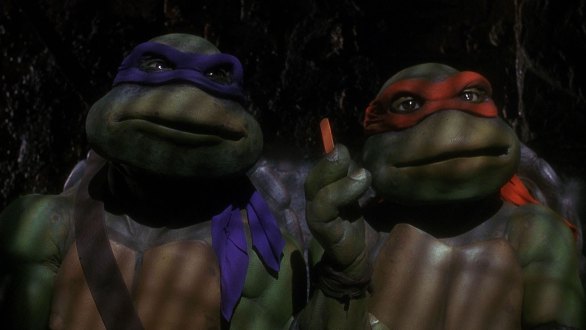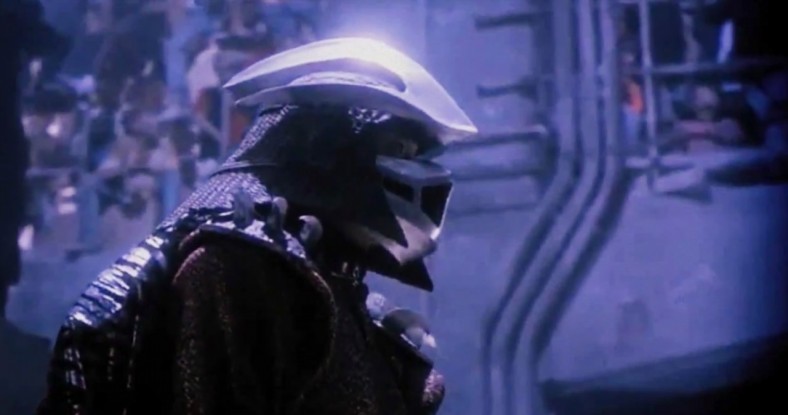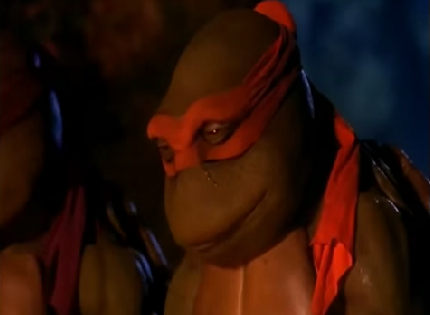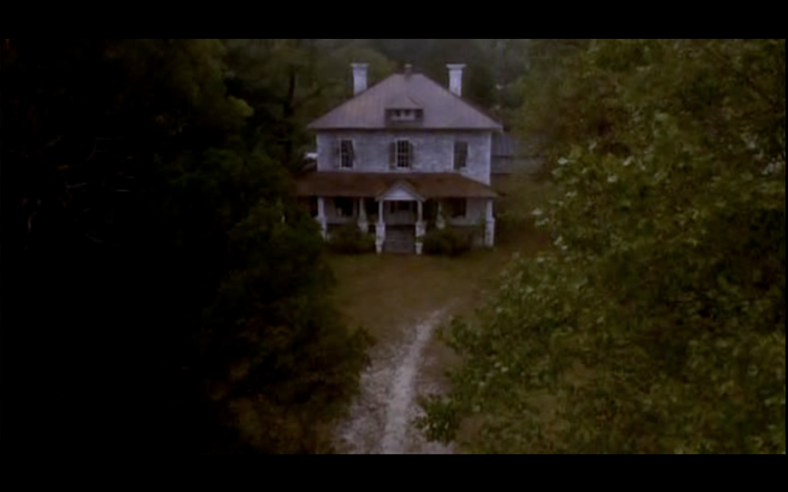If you’re a child of the 80s, chances are that when you were very young, your parents took you to see “Teenage Mutant Ninja Turtles” when it premiered in theaters in 1990. If you were indeed like me, you were obsessed with the cartoon, the video games, the toys; all of it. Furthermore, if you’re still at this point, like me, then you left the TMNT movie having no idea what the hell happened during it.

“Teenage Mutant Ninja Turtles” is a rather unique example of a film that capitalized on a popular culture kid’s craze while doing virtually nothing to make it appeal to said kids. The film is dark in both tone and lighting, its violence bounces between slapstick and brazenly realistic, the humor is loaded with far more adult than kid jokes, and large amounts of the plot deal with loss, grief, and family issues. Perhaps the tone of this movie can best be summed up by this little fact: the first word spoken by the Turtles is Raphael saying, “Damn.” That’s right, the very first time we hear a live action turtle speak, and it’s a curse word, all be it a minor one.

Ardent TMNT fans will be quick to note that the darkness of the film should come as no surprise given that the original 1984 comic book series that the Turtles premiered in, is in fact, quite dark itself. The cartoon version of the four, shelled heroes that debuted in 1987 was the first time that they were shown in a more “kid-friendly” format, which is also where some of their most identifiable traits come from, such as the different colored headbands, love of pizza, their distinctly different personalities, and a different origin story for their master, Splinter. The feature film takes a lot of the concepts of the cartoon and sets them within the darker, more realistic tone of the comic. The result of this blending leaves us with a story that is full of frequently comical characters that deal with some frighteningly real threats to their well-being.
The odd part about all this though is how despite it being marketed to them, kids aren’t going to grasp the setting of this movie. Sure they might laugh once or twice at a quick slapstick joke, but really those are like the equivalent of some of the physical comedy in the Roger Moore, James Bond films. Regardless of whether a scene or two may be comically crammed out of place into a more serious film, it doesn’t actually make the movie any more kid friendly. It’s only thanks to the benefit of hindsight and maturity that the elements of Teenage Mutant Ninja Turtles start to come together. And it’s within that hindsight that some of those same elements truly stand out even today:
1) The Lighting

As I mentioned before and I will mention again, this is a dark film; a vast majority of it takes place in dark areas or during the night. The Turtles’ first appearance? At night, descending into the dark sewers. Raphael meeting Casey Jones: happens at night. Shredder’s first appearance: in a dark room in the middle of the dimly lit Foot Clan hideout. Raphael’s fight against the Foot: starts on a roof, ends in a dark basement. You get the point.
2) Shredder is a Gang Leader

Here’s something you’re definitely not going to understand as a kid: everything Shredder says to the Foot Clan recruits in his big speech to them is based heavily on actual gang leader rhetoric. Shredder fosters their hatred of the outside world and helps them demonize it, presents the Foot Clan as a family that accepts them, projects himself as a father figure, and gives everyone a purpose they can unite behind. Congratulations, you just got an introduction to the psychology behind gangs and gang recruitment.
3) Danny’s Subplot Compliments The Main Story
As a kid watching this movie you may find yourself confused as to why the film goes out of its way to keep showcasing this red headed kid who joins the Foot clan. Danny, the son of April’s boss, is at constant odds with his father (acting out as a rebellious teen) and seems lost, looking for a father he can respect. In terms of the main story, his presence helps move the plot at a couple of vital points and also gives Splinter a chance to explain some backstory. Even though he’s a side-character to the Turtles, he is given a small character arc that’s made a bit more substantive because of how the problems between him and his dad echo the movie’s themes.
4) Loss and Grief
Early in the film, Splinter mentions to the Turtles that he won’t be around forever, a message that they seemingly shrug off. Later in the film, the central conflict involves the loss of Splinter when The Foot track him down and kidnap him. The Turtles don’t know this, they presume he’s been killed. The loss of their father triggers a substantial amount of grief, pain, tension, anger, and denial in them. Not only does this obviously move the story along, it also helps define the different respective characters of the Turtles by showcasing how they cope with loss.
5) The Farmhouse Scenes
After the Turtles get their shells handed to them at April’s apartment, they all retreat to her old family farmhouse on the outskirts of New York City. As a kid, this entire sequence seems dull and pointless; viewing it as an adult makes it much more understandable. The entire point of this section is to further develop character. Raphael is badly hurt and rendered unconscious, Leonardo is wracked with guilt for fighting with Raphael and causing him to storm out of the apartment leading to Raph being ambushed and almost killed by the Foot, Donatello is constantly bickering with Casey Jones, and Michelangelo is trying to be his normal, wise-cracking self; or as much as he can possibly be.
6) The Campfire
Through the bond of their brotherhood and love, the Turtles channel Splinter upon Leonardo’s insistence that their father is alive. The result is a touching little speech that Splinter delivers to them, which from their perspective. is either words from beyond the grave, or his final words before leaving this world. Whichever they are, it’s a moving scene and it’s made all the more moving if you’ve lost a parent and know what it feels like to wish you had another chance for one last conversation with them.
7) The Humor

Okay, time to lighten things up a little bit here. The jokes in this movie are ridiculously skewed towards the adult crowd, and not in the sense of “Oh kids will laugh but adults will catch the hidden meaning.” No, these are just straight up references for adults. For example, when Casey Jones meets Raphael for the first time and they fight each other, Casey attacks him with a bat. Raphael grabs it, looks at it and remarks, “A Jose Canseco bat? Tell me…you didn’t pay money for this.” Donatello compares Casey and April’s bickering with each other to the show “Moonlighting.” Michelangelo does a James Cagney impression. Donatello and Casey have a discussion over who would end up with who on “Gilligan’s Island.” Good luck getting a laugh out of all this kids.
8) The Puppeteering

This is something fairly remarkable, but then again, not entirely unexpected considering who was behind it all. Even by today’s standards, the costumes in TMNT are amazing. Essentially, all of the Turtles are a combination of costumes and puppet like faces. It’s a marvel in itself how the actors were able to work in the suits so effectively but virtually all the thanks has to be given to the man who designed the puppets/costumes, Jim Henson.
9) 9.95
Playing over the end credits, the song “9.95” by Spunkadellic is the epitome of late 80s early 90s excess, and it is AMAZING. Written and produced by Dan Hartman (a sorely underrated songwriter that you may know from his hit, “I Can Dream About You“) the song combines 80s keyboards with a new jack swing delivery and sound. If you’re the type of music listener who enjoys or doesn’t mind dated musical styles, you’re in for an absolute treat with this cheesy yet catchy number.
10) The Musical Score
Along with “9.95,” the entire soundtrack is pretty much drenched in music that is very indicative of the time. That being said, a lot of the score is extremely effective. A perfect example of this takes place in the fight sequence in the antique shop below April’s apartment. The fight between the Turtles and The Foot begins silly and cartoonishly with a backing music track to match. Once Casey Jones enters the fight though, the music shifts to a much more tense, keyboard fueled track, one of the foot soldiers accidentally sets fire to the place, and the sense of danger escalates quickly.
With all that in mind, if you haven’t watched “Teenage Mutant Ninja Turtles” lately, now is the time to do so. There is no way all of this would’ve sank into your mind if you watched it as a kid but I encourage you to view it now with the benefit of maturity and a critical eye.
You can catch it on HBO Max now.
Also, we’re getting another TMNT reboot movie?










![“M3GAN 2.0” A Sequel That Forgets to Have Fun [Review] "M3GAN," 2025](https://i0.wp.com/nerdbot.com/wp-content/uploads/2025/02/maxresdefault.jpg?fit=450%2C253&ssl=1)